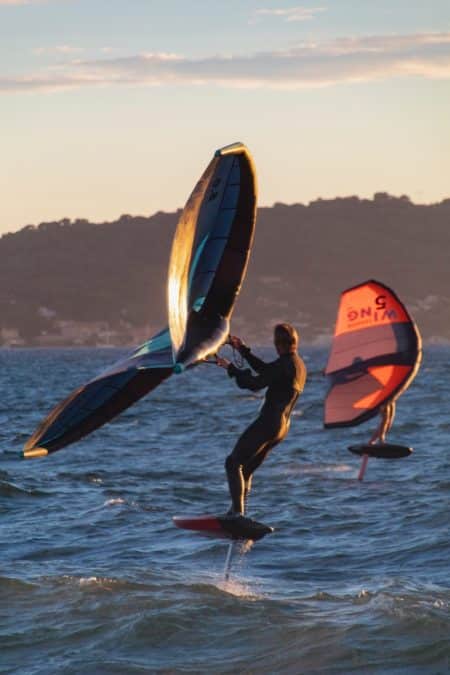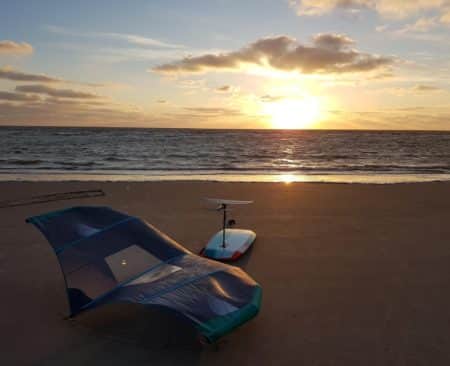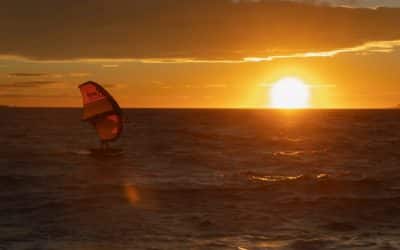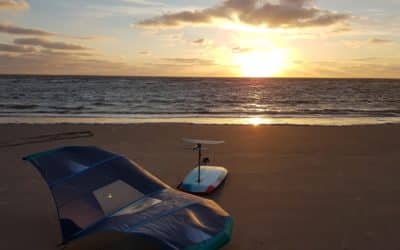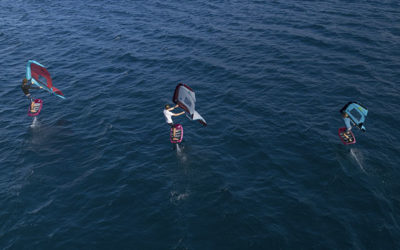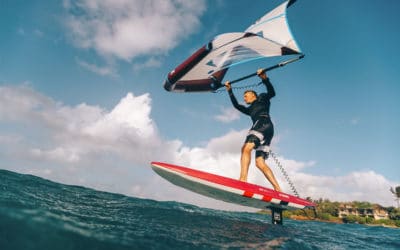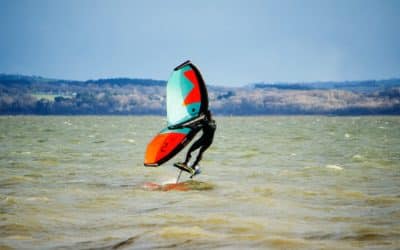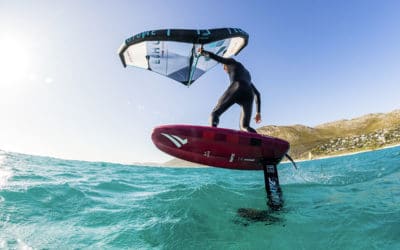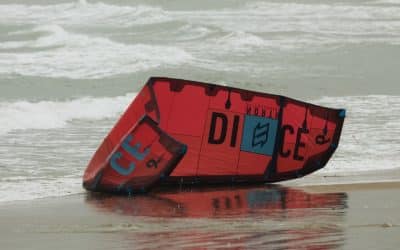Wingfoil: the essential equipment for beginners
Starting a sport activity often requires the purchase of equipment. So it’s no surprise that you’ll have to get out your credit card to buy equipment if you’re just starting out in wingfoil. Here is the list of what you absolutely need to start in the best conditions your new passion.
Start kitesurfing with the perfect equipment
No doubt about it, you’ve already taken a few lessons in wing and you’re totally hooked! You will practice long and often! That’s great. Now it’s time to think about what equipment to invest in to start your exploits.
You have a first choice to make: choose between a complete package or buy your equipment piece by piece.
In the first case, different brands offer you the basic equipment you need to get out on the water, namely a board, a kite and a foil. This option will cost you at least 1,500 euros. Several brands offer basic wingfoils, but if you prefer to invest in better quality equipment, you should consider spending more (closer to 2,000 euros). If you don’t like to make things difficult for yourself, this is the best option. However, when we say complete kit, it is not quite true.
There are many other pieces of equipment that need to be included in your list as well. First of all, everything that concerns your safety. You will need to invest in two leashes (one for your board, one for your kite). You will also need a pump to inflate your kite. Choose your kit according to your size and the area where you will mostly practice.
Buy your equipment one by one
If you prefer to put together your own wingfoil kit, you will of course need to buy the basic equipment, i.e. a board, a foil and a wing.
As far as the board is concerned, several criteria are essential. For example, you should always buy a board that fits your weight perfectly. With this number (the real one!) you can define the ideal size and volume of your board. If you don’t want to do “complicated calculations” (we’ll come back to that), you can take into account that you need between 20 and 30 litres more than your weight.
As far as size is concerned, there are no major difficulties when you are a beginner. Boards that are not reserved for “professionals” have a size proportional to their volume. You can therefore leave this criterion aside for the moment. Be aware that the heavier and longer your board is, the more stable it will be. This may be important in your choice. But beware, there is no need to buy an XXL model. You won’t be able to handle it if it doesn’t fit your body type.
You have found the right board size. Now you have another choice before you check out: rigid or inflatable board?
Are you on a tight budget? Choose an inflatable model. Besides the price, these models are easier to store (once deflated, they don’t take up too much space). Nevertheless, an inflatable board is really less lively than its rigid counterpart. It is also slower to set up. And even if it is quicker to store, it will require more handling.
Another choice is the rigid board. This one will take up more space for storage. But it offers a better feeling. It will accelerate and take off much faster. But it is a more fragile board. So to start, you can choose a second-hand model. You will regret less the breakage. Especially as you are just starting out. This means that you will progress and therefore need another board more adapted to your preferences rather quickly (in principle).
Now it’s time to talk about foils. This is the “wing of your plane” to put it simply. If you don’t choose the right foil, you will never take off. So it is very important. This element is made up of 4 parts: a mast, a fuselage, a stabilizer and a front wing.
The surface area of your wing should be between 1800 and 2000 cm² to start wingfoiling. The more surface area you have, the easier it is to take off. The size of your wing is also a factor. The bigger it is, the bigger the surface area of the wing should be. If you practice where there is a lot of wind, you can reduce the size of the kite.
For the mast, you can choose between an aluminium or carbon model. With aluminium you will spend less, but the foil will be heavier and less responsive. It can also oxidise. Carbon masts are much more expensive. It is true that they react quickly and well to your manoeuvres and do not oxidise. But for a beginner this is an unnecessary luxury.
Your wing now. The base? The surface of the wing should be chosen according to the wind. So yes, the most logical thing would be to buy lots of wings to suit every wind condition. But as a beginner, you are probably not going to face stormy conditions yet! A 4m² wing is ideal for smaller people (under 75kg). Your wing should be 5m if you weigh 80-90kg. As far as wind is concerned, the less wind there is, the bigger the wing should be. A 5m wing will be perfect for winds between 15 and 25 knots. A 6m model should be used with a wind between 10 and 15 knots.
Don’t forget your safety
Now you know what basic equipment to buy to start wingfoiling. Now it’s time to look at the “little extras” that are absolutely essential to avoid big problems in case of an accident, even if wingfoil is less dangerous than windsurfing.
A light helmet can be useful, but hits on the head are actually quite rare (except of course if you regularly fall on your board). Obviously, as a beginner, the risk is greater, so a helmet can be a good buy. An impact vest can also be useful. Also check that where you practice, it is not mandatory (Lake Geneva, for example).
Search
Catégories
Recent Posts
Suivez-nous !
